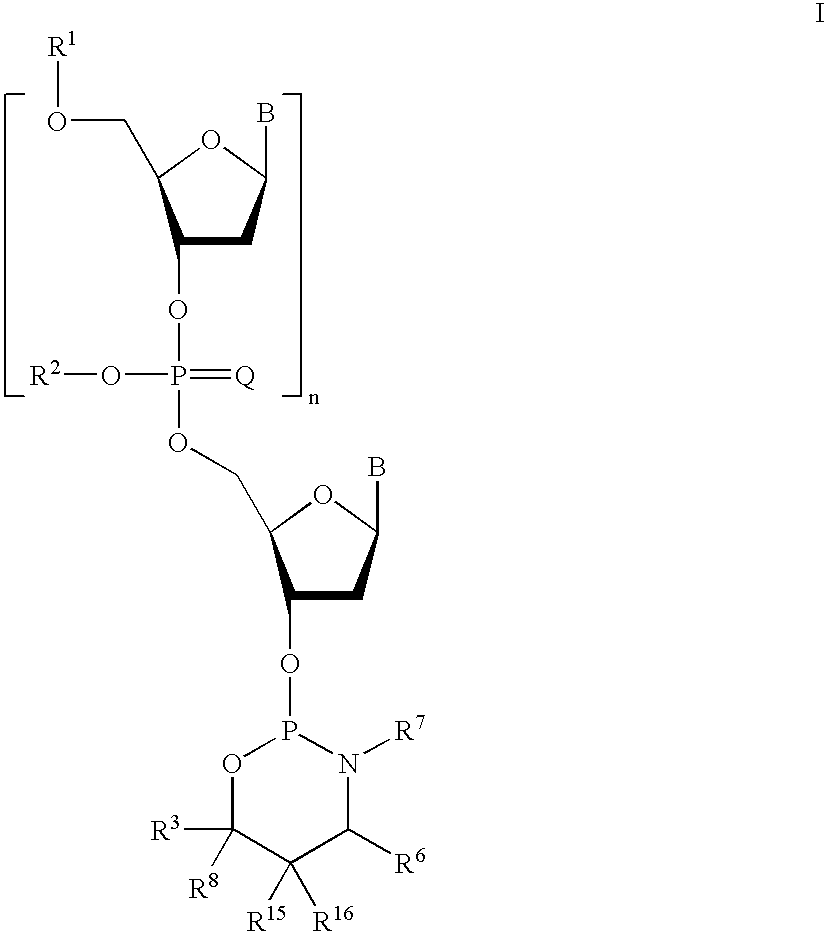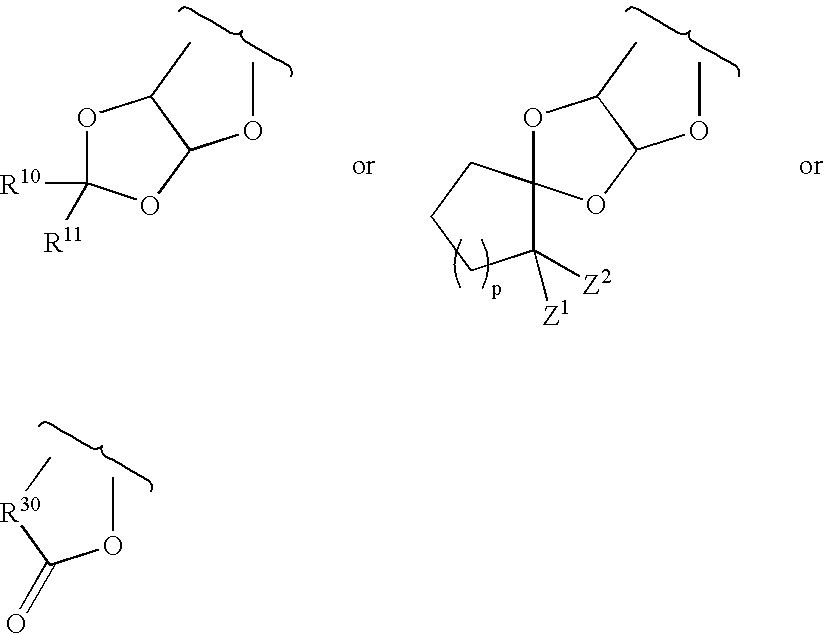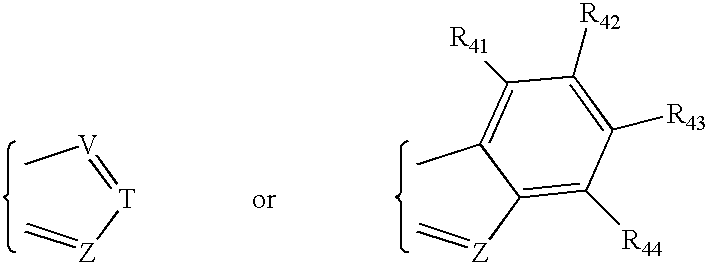Preparation of phosphorothioate oligomers
a technology of phosphorothioate and oligomer, which is applied in the field of preparation of phosphorothioate oligomers, can solve the problems of increasing length, unable to separate the diastereomers, and the complex effect of the diastereomers of undefined stereochemistry on hybridization, and achieves high diastereomeric excess
- Summary
- Abstract
- Description
- Claims
- Application Information
AI Technical Summary
Benefits of technology
Problems solved by technology
Method used
Image
Examples
example 1
3R-hydroxy-N-iso-propylbutanoamide (10)
[0180] 50
[0181] A 2 M solution of trimethylaluminium in hexane (50 ml, 100) was slowly added to a solution of 8.5 ml (100 mmol) isopropylamine in 100 ml dichloromethane under nitrogen at room temperature. The mixture was stirred for 30 min and then cooled to 0.degree. C. before 6.6 g (50 mmol) of ethyl-3R-hydroxybutanoate was added. The reaction mixture was stirred at room temperature for 2 hours for completion, carefully quenched with dilute HCl and extracted with chloroform. The organic extract was dried over MgSO.sub.4 and concentrated to affored 7 g N-isopropyl 3R-hydroxy butanoamide. After recrystallization, 5.5 g pure amide 10 was obtained (yield 76%).: m.p. 62.degree. C.; .sup.1H NMR (200 MHz, CDCl.sub.3) .delta.6.41 (m, 1H, NH), 4.35 (b, 1H, OH), 3.78-4.15 (m, 2H, MeCH, Me.sub.2CH), 2.08-2.32 (m, 2H, CH.sub.2), 1.12 (d, J=6.3 Hz, 3H, Me), 1.07 (d, J=6.6 Hz, 6H, NCHMe.sub.2); .sup.13C NMR (50 MHz, CDCl.sub.3) .delta.171.5 (C.dbd.O), 64.7...
example 2
2R-Hydroxy-4-(N-isopropyl)aminobutane (11)
[0182] 51
[0183] To a solution of 32 ml 1 M borane (32 mmol) in THF was added 2.32 g (16 mmol) 3R-hydroxy-N-iso-propyl-butyl butanoamide 10 in 20 ml THF at 0.degree. C. under nitrogen. The solution was then brought to reflux and maintaned there for one hour. The reaction mixture was cooled to room temperature and 1 N HCl was added slowly to quench the reaction. THF was removed in vacuo, and the aqueous solution was saturated with solid NaOH and then was extracted three times with a total 300 ml chloroform. The combined chloroform phase was dried, filtered and distilled to afford 1.4 g 3-(N-isopropylamino) butan-2-ol 11 as a clear, colorless liquid (yield 67%).: .sup.1H NMR (200 MHz, CDCl.sub.3) .delta.3.80-3.96 (m, 1H, CHOH), 2.86-2.98 (m, 1H, MeCH), 2.56-2.75 (m, 2H, NCH.sub.2), 1.24-1.60 (m, 2H, CH.sub.2), 1.08 (d, J=6.1 Hz, 3H, Me), 0.98 (d, J=6.2 Hz, 6H, Me.sub.2); .sup.13C NMR (200 MHz, CDCl.sub.3) .delta.69.5 (OCH), 48.6 (NHCH.sub.2), 4...
example 3
2R-Hydroxy-4-(N-tert-butyl)aminobutane (31)
[0184] 52
[0185] To a solution of 26.4 ml 1 M (26.4 mmol) borane in THF was added 2.1 g (13.2 mmol) 3R-hydroxy-N-tert-butylbutanoamide in 20 ml THF at 0.degree. C. under nitrogen. The solution was then brought to reflux and maintained there for one hour. The reaction mixture was cooled down to room temperature and 1 N HCl was added slowly to quench the reaction. THF was removed in vacuo, and the aqueous solution was saturated with solid NaOH and then was extracted three times with a total 250 ml diethyl ether. The combined organic phase was dried, filtered and distilled to afford 398 mg 2R-hydroxy-4-(N-tert-butyl)aminobutane 31 as a clear, colorless liquid (yield 20.1%).: .sup.1H NMR (200 MHz, CDCl.sub.3) .delta.3.80-3.92 (m, 1H, CHOH), 3.40-3.80 (b, 2H, OH, NH), 2.50-2.90 (m, 2H, NCH.sub.2), 1.28-1.61 (m, 2H, CH.sub.2), 1.07 (d, 3H, Me), 1.03 (s, 9H, Me.sub.3)
PUM
| Property | Measurement | Unit |
|---|---|---|
| temperature | aaaaa | aaaaa |
| temperature | aaaaa | aaaaa |
| Tm | aaaaa | aaaaa |
Abstract
Description
Claims
Application Information
 Login to View More
Login to View More - R&D
- Intellectual Property
- Life Sciences
- Materials
- Tech Scout
- Unparalleled Data Quality
- Higher Quality Content
- 60% Fewer Hallucinations
Browse by: Latest US Patents, China's latest patents, Technical Efficacy Thesaurus, Application Domain, Technology Topic, Popular Technical Reports.
© 2025 PatSnap. All rights reserved.Legal|Privacy policy|Modern Slavery Act Transparency Statement|Sitemap|About US| Contact US: help@patsnap.com



